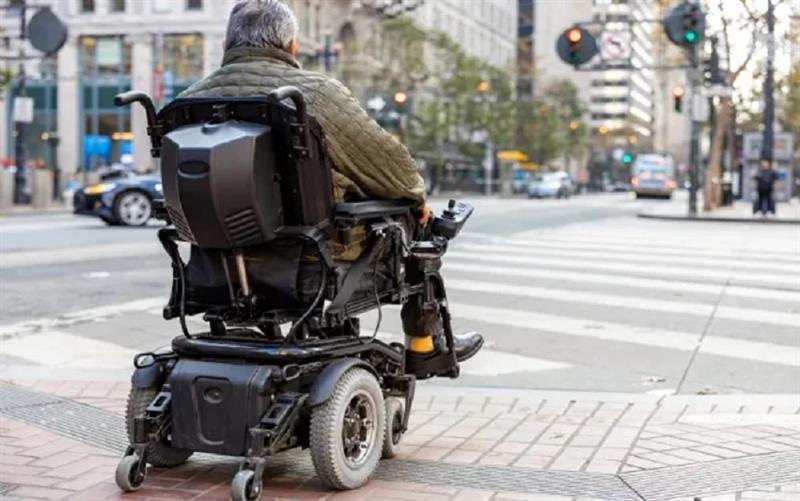
Multimode electric wheelchairs represent a significant advancement in mobility technology, providing users with unprecedented flexibility, functionality, and independence. By seamlessly adapting to various environments, offering versatile modes of operation, and incorporating advanced customization and safety features, these wheelchairs revolutionize the mobility experience for individuals with diverse needs. Furthermore, their connectivity, longer battery life, compact design, accessibility features, and sustainability aspects contribute to a more inclusive and sustainable future.
Multimode electric wheelchairs offer a comprehensive suite of features and benefits that revolutionize mobility for users in 2024. From adaptability and versatility to customization, intelligent technology, and sustainability, these innovative devices empower individuals to navigate the world with newfound freedom, independence, and confidence.
1. Adaptability:
Multimode electric wheelchairs excel in adapting to various environments and situations. They are designed to smoothly transition between different terrains and obstacles, whether it's navigating through crowded city streets, traversing bumpy outdoor paths, or maneuvering through tight indoor spaces. This adaptability ensures that users can maintain their mobility and independence regardless of the challenges they encounter.
2. Versatility:
These wheelchairs offer a diverse range of modes to cater to different mobility needs. For everyday use, users can utilize the standard power mode, which provides effortless propulsion. However, they also have the flexibility to switch to manual mode for exercise or in case of battery depletion. Moreover, specialized modes are available for specific tasks such as climbing stairs or tackling steep inclines, offering unparalleled versatility to users.
3. Customization:
Advanced customization features allow users to personalize their wheelchair's settings according to their specific preferences and requirements. From adjusting speed and acceleration to fine-tuning suspension and steering sensitivity, individuals can tailor their wheelchair to optimize comfort, control, and performance. This customization ensures that each user can enjoy a personalized mobility experience tailored to their individual needs.
4. Intelligent Technology:
Multimode electric wheelchairs are equipped with sophisticated technology to enhance safety and usability. Features like obstacle detection sensors, collision avoidance systems, and automatic braking mechanisms help prevent accidents and ensure user safety. Additionally, intelligent navigation systems can assist users in planning routes and avoiding potential hazards, further enhancing their confidence and independence.
5. Connectivity:
Many modern multimode wheelchairs come with connectivity features, allowing seamless integration with smartphones or other devices. Through dedicated apps or interfaces, users can access a range of functionalities such as navigation assistance, wheelchair performance monitoring, and communication with caregivers or emergency services. This connectivity enhances convenience, accessibility, and peace of mind for users and their support networks.
6. Longer Battery Life:
Advancements in battery technology have led to extended operating times for multimode electric wheelchairs on a single charge. This longer battery life ensures that users can remain active and independent for extended periods without the need for frequent recharging. Whether it's running errands, attending appointments, or enjoying outdoor activities, users can rely on their wheelchair's battery to support their mobility needs throughout the day.
7. Compact Design:
Despite their advanced capabilities, multimode electric wheelchairs are designed to be compact and portable. Foldable frames, detachable components, and lightweight materials make transportation and storage more convenient for users on the go. This compact design enables users to easily transport their wheelchair in vehicles or store it in confined spaces when not in use, enhancing overall flexibility and convenience.
8. Accessibility Features:
Manufacturers prioritize accessibility by incorporating features that enhance usability for individuals with diverse mobility needs. Adjustable seat heights, easily accessible controls, and intuitive interfaces ensure that users can operate the wheelchair comfortably and efficiently. Additionally, ergonomic design elements contribute to reduced strain and fatigue, promoting greater comfort and usability for all users.
9. Sustainability:
Many multimode electric wheelchairs are designed with sustainability in mind, utilizing eco-friendly materials and energy-efficient components. By reducing environmental impact and promoting responsible manufacturing practices, these wheelchairs contribute to broader sustainability efforts. Additionally, some models may incorporate features such as regenerative braking systems or solar charging options, further minimizing their ecological footprint.
10. Battery System:
The battery system of an electric wheelchair is a crucial component that provides the necessary power to drive the wheelchair's motor and operate its electronic features. The battery system plays a critical role in powering electric wheelchairs, providing users with the energy needed for mobility and independence. By understanding and properly managing the battery system, users can maximize the performance, reliability, and longevity of their electric wheelchairs.
11. Safety Features:
Safety features are integral to electric wheelchairs, ensuring user protection and preventing accidents during operation. Safety features are essential components of electric wheelchairs, prioritizing user protection and enhancing confidence during mobility. By incorporating these features, electric wheelchairs provide users with a safer and more secure means of transportation and independence.
12. Control System:
The control system of an electric wheelchair is responsible for translating user input into commands that govern the wheelchair's movement and functionality. The control system of an electric wheelchair plays a critical role in enabling users to operate the wheelchair safely, effectively, and independently. By providing intuitive interfaces, customizable settings, and integrated safety features, the control system empowers users to navigate their environment with confidence and autonomy.